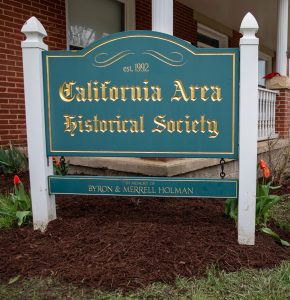Recent news to shape future of Cal U, Borough
Search committee for new president, hazard mitigation plan announced
October 1, 2015
At both student and faculty convocation, California University of Pennsylvania interim president Geraldine Jones was adamant that changes would continue to occur at the university. However, as long as the university made practical decisions, Jones was confident change could be a positive thing.
In recent weeks, the university has made two decisions it hopes result in a stable Cal U for years to come. The first of these decisions involves the search for the university’s next president. At Cal U’s Council of Trustees meeting on Sept. 16, the university took the next step toward finding a president when the board approved an 11-member search committee. The committee includes the following; three trustees (committee chair James Davis, Michele Mandell and Thomas Uram), one executive (Mohamed Yamba, dean of the liberal arts department), two faculty members (Emily Sweitzer [who was elected to the committee by her colleagues] and APSCUF president Barbara Hess [who was selected by the faculty collective bargaining unit]), two non instructional personnel (AFSCME President George Josay and university police chief Ed McSheffery), one student elected by student government (Jessica Curry), one Cal U alum (Lynne Stout, president of the Alumni Association Board) and one president from a comparable university in the state system (Edinboro University President Julie Wollman).
Moving forward, according to PASHEE guidelines, the committee will define the expectations of presidential candidates, set a timeline for the search, screen potential candidates, and invite candidates for interviews. An independent consulting firm will also be selected by committee chair Davis to aid in the search. At the end of the process, the committee will submit the names of two candidates to the PASHEE Board of Governors. The cost of the search, specifically the money owed to the search committee, will be covered by funds from the state system reserve.
More recently, the university announced the second decision that will affect Cal U in both the immediate and distant future. A hazard mitigation plan (HMP) is currently being developed to better prepare Cal U for potential manmade or natural disasters. Christine Kindl, director of communication and public relations at the university, said this plan, which has been in the works since late 2013, is an update to the university’s previous hazard mitigation plan, which was approved in November of 2008. According to Kindl, the Federal Emergency Management Agency (FEMA) requires universities to update their plans “typically about every five years.” According to the university, by having a FEMA-approved hazard mitigation plan, Cal U can protect itself against things such as severe weather, flooding, environmental hazards, and infectious disease outbreak. The university also has a better chance of receiving state or federal funding for recovery or reconstruction projects.
The plan, which, according to Cal U’s website, was “developed through a formal process that included evaluating risks and assessing capabilities [of the university to deal with disasters]” used the latest data and information concerning disasters to determine areas where Cal U is vulnerable. According to research done by a Cal U Steering Committee, PASHEE, and Michael Baker International, a firm that assists municipalities and governments with projects like hazard mitigation plans, Cal U’s hazard vulnerabilities are as follows (in order from most likely to cause a hazard to least likely to cause a hazard): winter storms, floods and ice jams, environmental hazards, tornados/wind storms, and finally pandemics and infectious diseases.
Some structural and material changes that are common in most HMPs are improved sprinkler systems, flood proofing and fireproofing of buildings, installation and improvements of backup systems such as generators, installation of surge and lighting protection devices, continued maintenance of roads, sidewalks, and buildings and improved warning systems.
Cal U’s plan, specifically, includes a wide range of actions. To address flood concerns, Cal U will both relocate buildings and facilities out of the floodplain and elevate buildings in flood-prone areas, as was done with Eberly Hall and the Kara Alumni House. Buildings will also be evaluated for their vulnerability to winter storms and power outages.
In conjunction with these assessments, contingency plans have also been made in the event said hazards occur. Plans have also been developed to deal with transportation accidents on roadways, rail lines, and the riverfront.
Other elements of the HMP include enhanced opportunities for faculty, staff, and students to learn appropriate responses to terrorism, and increasing the amounts of signs at Roadman Park and the SAI Farm to make the area easier to locate.
For more information on the plan, members of the campus community can visit the plan’s official website: http://www.caluhmp.com/home. The university will continue to provide updates concerning the presidential search on its homepage.







